
What are the known health risks associated with smoking?
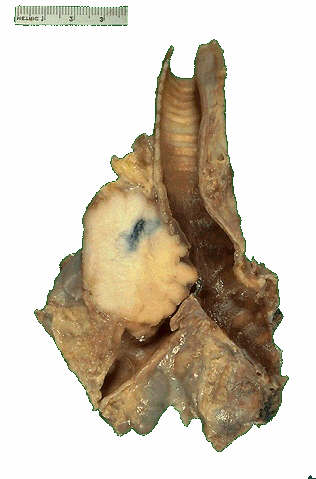
Cigarette smoking damages every organ of the body and is responsible for more than 5 million annual deaths. Quitting lowers risk of smoking-related diseases and can add a decade or more to your life.
Up to 81 known cancer causing chemicals in every puff, smoking causes roughly 9 out of 10 lung cancer deaths in men and 8 of 10 in women. More women die from lung cancer each year than from breast cancer. Three lung cancer scenarios: attempt quitting once diagnosed with it, wait too long and develop it after you quit, and quit soon enough to avoid it.
Nearly all long-term smokers already have some level chronic obstructive pulmonary disease (COPD). Never have we taken a puff that didn't collectively destroy more of roughly 500 million air sacs (aveoli) that we started with. But with substantial excess lung capacity, it may not be noticeable until we have destroyed all excess capacity and don't have enough remaining capacity to finish life. Roughly 9 out of 10 COPD deaths are caused by smoking.
When we think of the damage being done to our body by smoking, we tend to focus on our lungs. It's natural to do so. We can hear the wheezing, feel the cough and actually sense the gradual deterrioration occurring inside.
But if we're going to worry or be concerned based upon the magnitude or size of the health risk we face, then our greatest concern should be on the damage smoking inflicts upon our body's blood flow systems. Yes, smoking related circulatory disease kills far more smokers than lung cancer and the damage started very early.
Cigarette smoking is estimated to increase the risk for coronary heart disease and stroke by 200 to 400 percent. It also increases risk of lung cancer in men by 2,300 percent and by 1,300 percent in women.
Blood is a vehicle for delivering oxygen and nutrients to our body's tissues and organs. Without it they die. Our blood vessels (circulatory system) are the piping highways in which our blood flows. The inside of each healthy blood vessel is coated with a thin teflon like layer of cells that ensure smooth blood flow. Carbon monoxide from smoking or secondhand smoke damages this important layer of cells, allowing fats and plaque to stick to vessel walls. Nicotine then performs a double whammy of sorts.
First, each time new nicotine arrives in our brain in causes a release of adrenaline which in turn immediately releases stored fats into our blood. Yes, the extra food we smokers eat during our big meals is converted to fat and stored, and then pumped back into our blood with each new puff. It's how we were able to skip meals and it's what causes many of us to experience low blood sugar levels when trying to quit. In fact, many of the symptoms of withdrawal - like an inability to concentrate - are due to nicotine no longer feeding us while we continue to skip meals (Note: In order to avoid blood sugar fluctuations don't eat more food, simply spread it out more evenly over your entire day).
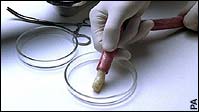
Video showing the fat buildup inside a 32 year-old smoker's arteries
These heavy blasts of stored fats, being released by nicotine, stick to vessel walls previously damaged by carbon monoxide. It only gets worse. We've recently learned that nicotine itself, inside our vessels, somehow causes the growth of new blood vessels (vascularization) that then provide a rich supply of oxygen and nutrients to the fats and plaques that have stuck to our vessel walls. This internal nicotine vascularization (vessels within vessels) hardens a smoker's blood arteries and veins and further accelerates their narrowing and clogging.
We each have a rough sense of the damage we've done to our lungs but what degree of clogging has already occurred in our blood vessels? How long do we have before our coronary arteries- that supply life giving oxygen and nutrients to our heart muscle - become 100% clogged? It's called a heart attack and the portion of the heart muscle serviced by the artery will quickly die. How long do we have before our carotid arteries - supplying life giving oxygen and nutrients to our brain - become 100% clogged? It's called a stroke and the portion of the brain serviced by the artery will quickly die.
The damage being done isn't just to the vessels supplying blood to our heart and brain, it's occurring - to one degree or another - inside every vessel in your body. It effects everything from blood vessels associated with hearing to the skin's blood supply that shows itself in wrinkles and early aging. Below are links to images showing varying degrees of artery clogging, followed by some wonderful links that aid in understanding or body's circulatory system.
How close are your body's tissues and organs to losing their blood supply? If curious, ask your physician to listen to your blood flow and tell you how it sounds, or to conduct other tests or examinations.
What Has Smoking Done to Your Arteries?
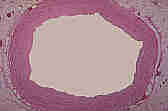
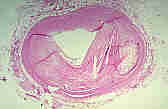
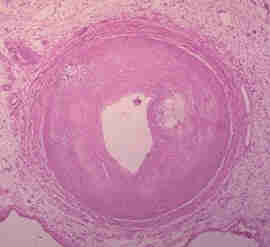

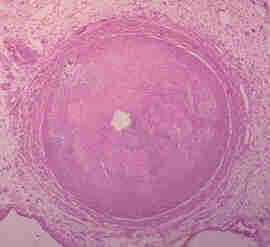

why won't it kill you? Click the cigarette to see a list of famous tobacco victims.
How your heart gets fed and nourished
Heart feeding tube diseases
Angioplasty
Bypass surgery
Heart attack
Knowledge is a Quitting Method

